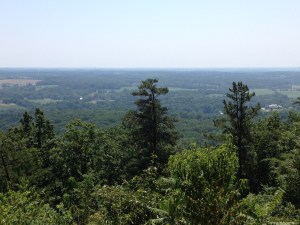Prelude to Antietam
Antietam, Sharpsburg—whichever name you prefer, it characterizes the bloodiest single-day in American history. On the fields surrounding this bucolic western Maryland town, 23,000 men became casualties.
Even before that bloody late summer day, the campaign had born casualties. Although definitely smaller engagements, these battles between Confederate cavalry and Union infantry and horsemen wrought death and suffering, and brought the war to the doorsteps of Maryland’s inhabitants. Although lost in the big picture of the campaign and the successive battles of South Mountain and Antietam, these places and the fighting that took place there added solemn names to casualty roles and place names to battle flags.
Furthermore, these places–mostly swallowed up by urban sprawl and the passage of time–can be visited today. Most have a Civil War Trails marker that gives a brief history of what happened there; however, some of these sites also saw events during the Gettysburg Campaign in 1863 that overshadowed the Antietam Campaign. What follows are some of the places worth visiting as the calendar days flip over to the 150th Anniversary of the Battle of Antietam.
Crossing Sites:
Edward’s Ferry
Confederate General Fitzhugh Lee’s Cavalry Brigade crossed here into Maryland on September 5th.

(author collection)
White’s Ferry
Confederate General Wade Hampton’s Cavalry Brigade crossed here and like Lee’s Brigade moved toward Poolesville on September 5th.

(author collection)
White’s Ford
Portion of Confederate General James Ewell Brown “JEB” Stuart’s Cavalry Division crossed here, along with a wing of Confederate infantry on September 6th.

(author collection)
Engagements:
Poolesville
Two separate engagements, the first on September 5th when the lead elements of Lee’s Confederate cavalry–the 5th Virginia–made according to Colonel Richard Beale of the 9th Virginia Cavalry “a dashing charge” into the town. The running fight against Union cavalry left three dead and four wounded Southerners and around 50 Union casualties–mostly captured Federal horse soldiers

(author collection)
On September 8th, Colonel Thomas Munford’s Confederate Cavalry Brigade fought a running fight with Federal cavalry from Poolesville to Bealllsville. Casualties were one killed and ten wounded wearing blue and two killed and six wounded wearing gray.

(author collection)
Barnesville
Fighting here as the 8th Illinois Cavalry tangled with the 9th Virginia Cavalry, where the 9th lost their battle flag and one dead and six captured soldiers.

(author collection)
Sugarloaf Mountain
Site of a Union observation post, the heights offered panoramic views of the surrounding area. The Confederates, Munford’s Brigade, used it to observe Union troop movements. Union cavalry under General Alfred Pleasonton could not dislodge Munford’s Confederates, but with the approach of General William Franklin’s Union infantry, Munford was forced to fall back.

(author collection)
Hyattstown
Action here temporarily broke up Confederate General JEB Stuart’s cavalry’s party at the Landon House. 1st New York Cavalry and the 1st North Carolina Cavalry clashed here. Major Alonzo Adams of the 1st New York led a spirited charge through the town.

(author collection)
Landon House
Still standing and privately owned, this was the site of Stuart’s dance held in recognition of the enthusiastic welcome the Southerners had achieved. Fighting at Hyattstown temporarily broke up festivities.

(author collection)
So, as you make your way to Antietam to take in the anniversary of the battle, check out a few of these sites on your journey. Each little town, house, and/or crossing point has its own unique history in the tragic drama of the American Civil War.

(courtesy of Civil War Trails)
For more information:
Civil War Trails
www.civilwartrails.com
I “heard somewhere” that Capt. Crenshaw”s artillery helped slow the union advance during the aftermath of the battle. Can you provide information?